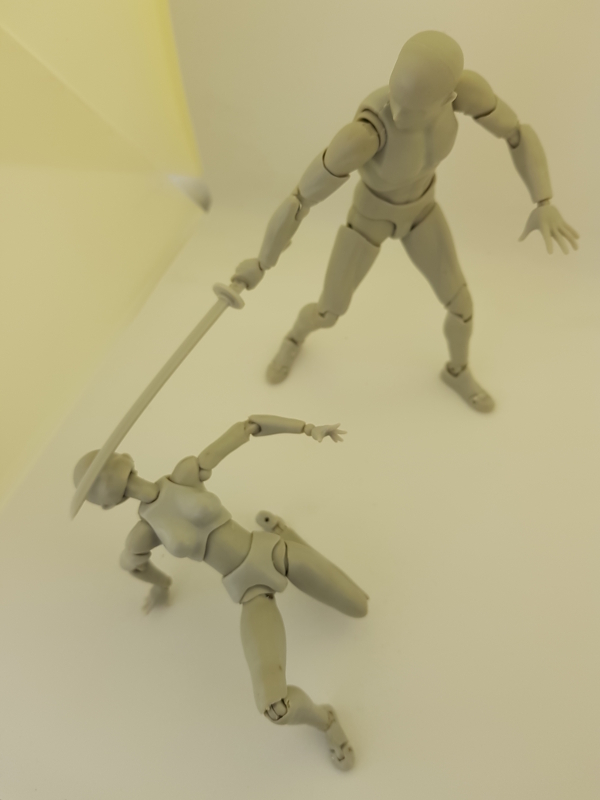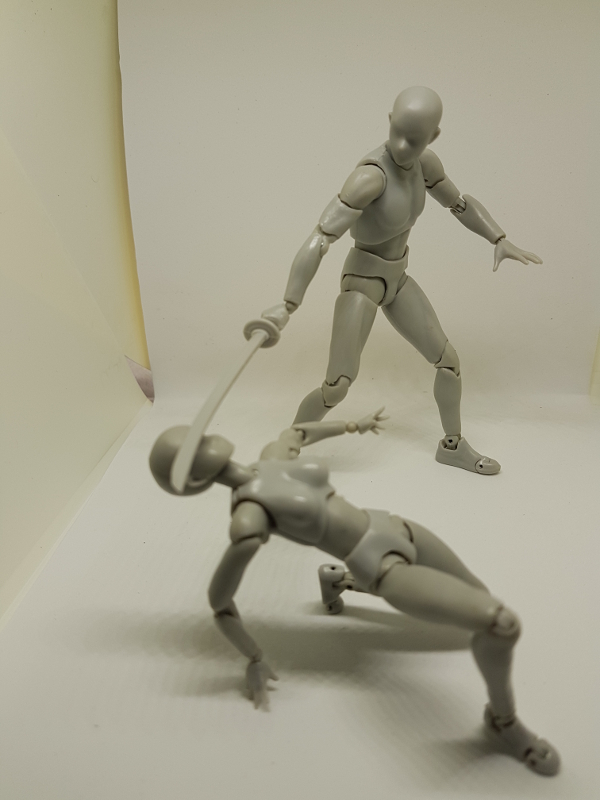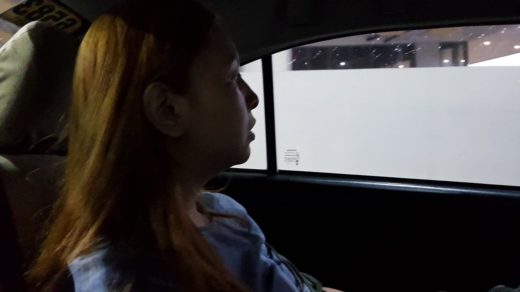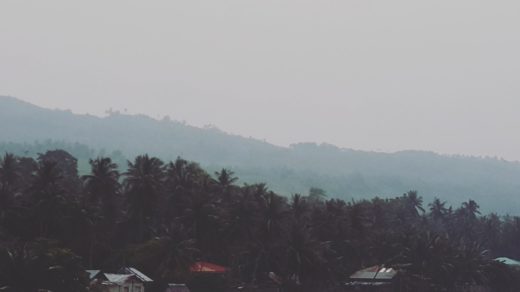The Goal
For this assignment, we were tasked to play with a single object to show how much we learned so far from this class using the following camera settings:
- Slow and fast shutter speed
- Wide and narrow aperture
Not applicable to me because my phone’s aperture is fixed to F1.7
- High and low ISO
- Landscape and portrait orientation, Dutch angle
- Cool and warm white balance
- Two (2) photos of our choice if we are exclusively using a smartphone camera
I squarely fall into this one since I’m using Aurora, my Samsung S8+, for all activities in this class
The Subject
Our home is usually cluttered, well it always is, and possibly 99.9% of our stuff DOES spark joy (sorry, Marie Kondo). In fact, a lot of things fit the description of meaningful and portable that I spent a few days mulling over which item to use. Enter the Kuns! A bit of a background – the Kuns, as we lovingly call them, are strategically placed near the kitchen which I frequent, more than I ideally should, so I can be reminded to practice on my sketching. During one of my sandwich trips, it dawned to me that they would also make great subjects for our photography class. However, only one item can be used and this puts me in a bit of a pickle. The Kuns are virtually inseparable so I decided to focus on Mrs. Kun but still have Mr. Kun assist in order to add context and depth on my final product.
Quick Trivia
What is a Body-Kun/ Body-Chan? According to bodykun.com: it is a highly realistic, articulated figure created with the artist in mind. Instantly create poses for any drawing with its over 30 articulated joints that make it even easier to recreate a desired pose or action. (sic)
Body-Kun is the male.
Body-Chan is the female (see reference photo).
The Constants
Before I begin, let me get a few things out of the way. There are variables in this assignment that is true for all photos and these are:
- The Camera — SM-G955F (Samsung S8+)
- The Aperture — Fixed at F1.7
- The Date and Location — February 9, 2019 | Queen City of the South – Cebu City
- The Background — A makeshift light box
As you may have known, I’m a stay at home mom with a toddler and an infant. Not that I’m complaining but this makes it difficult for me to actually get out there and shoot – not people – but pictures on any background I fancy.
This is also the reason why I need to think out of the box and present to you my assignment in a rather simplistic yet informative and engaging manner.
The Encounter
I will be breaking away from the suggested listing order so be prepared. A screenshot of the settings used per photo is included for your reference. I hope you’ll learn from my work as much as I did while creating them.
Allow me to take your hand and show you, with the help of the Kuns, basics of the exposure triangle while telling you a short story. Don’t forget to click on the thumbnail to view its 800×600 counterpart on a new browser tab. With much excitement and pride, let me present to you:
The Encounter.
High ISO with Low Light
F1.7 | ISO 800 | 1/60 s | metadata proof
High ISO allows the sensor of the camera to be more sensitive to light. Digital sensors provide more power and becomes more active or sensitive to light. As you can see, we are still able to capture some detail even if the lighting condition is relatively dark.
Quick Fact: In the film days, photographers shoot with a single ISO per batch or roll of film. A photographer back then is either prolific at adjusting shutter speed and aperture. Or, very quick at swapping out film rolls.
White Balance – Cool
F1.7 | ISO 50 | 1/60 s | metadata proof
Cool white balance creates a blue tinge on the photo thus the perceived coldness. Here I’m using it to show the chilling sensation when confronted with a traitor and impending death.
Dutch Angle
F1.7 | ISO 50 | 1/60 s | metadata proof
Reasons for using the Dutch angle is still very much mixed but for this purpose, I used it to demonstrate uneasiness. From this angle, it highlights the uneasiness of the situation.
Low ISO with Slow Shutter Speed
F1.7 | ISO 50 | 1″ s | metadata proof
Low ISO sets the sensor of the camera to be less sensitive to light. Slow shutter speed means exactly what it says, the shutter is slow to close. The effect is that it exposes the sensor to more light. This was shot while a good light source was on. There is no need to up the ISO since there is ample light. I simply used a slow shutter to create a dramatic, well-lit effect.
White Balance – Warm
F1.7 | ISO 50 | 1/60 s | metadata proof
Turning up the color temperature of a photo can be used to deliver varied messages. If shooting a portrait, it will create a flush or glow that may work nicely if used correctly. This photo aims to show a tensed mood and the temperature rising in an argument.
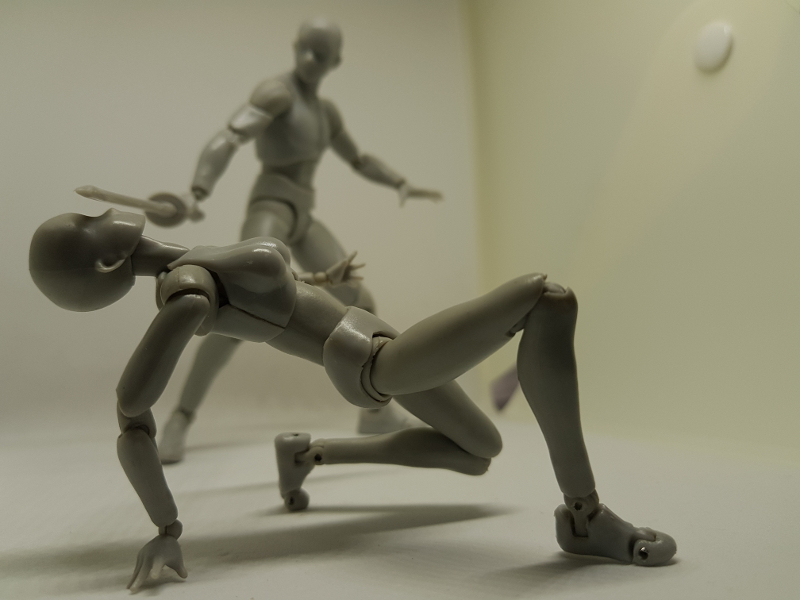
Quick Note: Skin tones are generally better under warmer color temperature.
Landscape Orientation
F1.7 | ISO 50 | 1/60 s | metadata proof
Most landscape shots are literally shots of land and their surrounding areas. In this setup and in photography, landscape is also a shot wherein the long end of an object is wider than it is high. Following the rule of third here brings the focus on the sword, showing that it missed her.
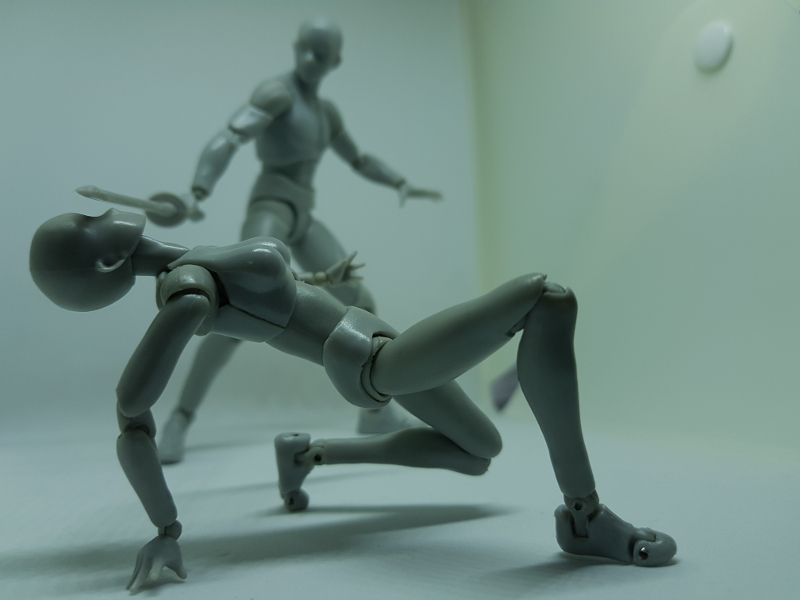
Portrait Orientation
F1.7 | ISO 50 | 1/60 s | metadata proof
In general, a portrait is a photo portraying the subject as they are or bringing highlight to the subject’s nature. Usually shot wherein the long end of an object is higher than it is wider. As compared to the above photo, this shot makes the heroine seem more compromised. I again employed the rule of third so that focus is on the characters’ heads.
Fast Shutter Speed
F1.7 | ISO 200 | 1/500 s | metadata proof
The Kuns have no capability to stand on tip toes except if placed on their mounts. To avoid blurring when I simulate a kick, I used fast shutter speed to freeze the antagonist mid-air as I release my hold on it.

Slow Shutter Speed
F1.7 | ISO 50| 1/50 s | metadata proof
The sword and the antagonist both became blurred. Slow shutter speed exposes the sensor longer thus capturing the object as it moves, exhibiting the motion blur on the photo. It can work depending on the theme and it does here because the aim is to show movement.

The Final Weave
There were only 3 poses done for this entire series: (1) The kawai sign done by the body-chan in the reference photo, (2) the sword held by body-kun barely touching body-chan’s face and (3) the swift kick by body-kun to body-chan’s torso to show actual movement. This is intentional to show how depending on the settings chosen by the photographer, a new message can be conveyed. Take for example the second pose which comprises most of the photos. Different settings gave an entirely new meaning to just one pose — the perspective, via the angle and the mood, via the white balance — and this is important to consider when photographers document a subject. They say a picture paints a thousand words and and it is our responsibility to deliver a clear, truthful and unbiased message unless of course, the intent is otherwise.




